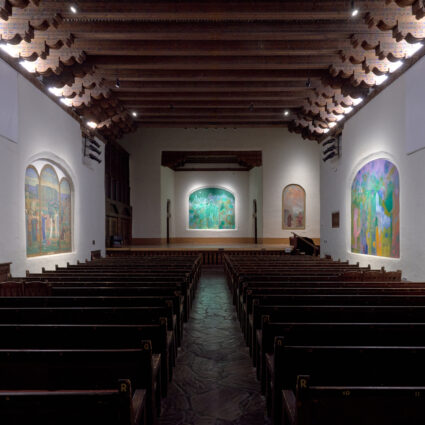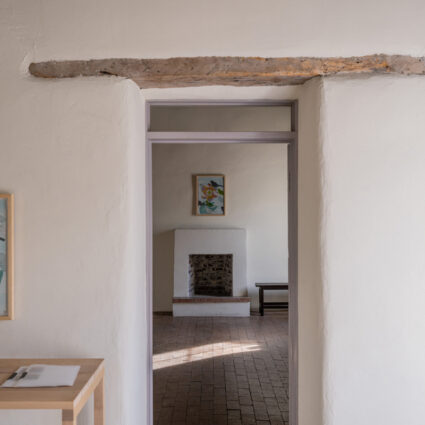Young Curator Sara Barrionuevo visits Alexander Girard’s renowned collection of folk art at the Museum of International Folk Art and finds both value and disappointments.
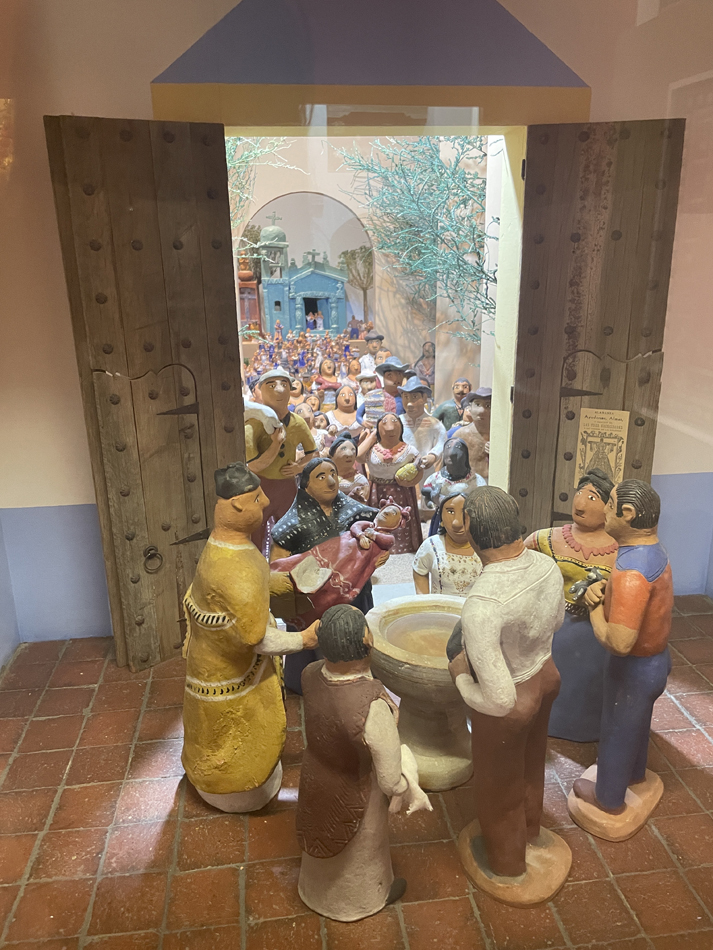
This article is part of our Young Curators series, written by high school students taking part in SITE Santa Fe’s Young Curators program.
Multiple Visions: A Common Bond
Permanent exhibition
Museum of International Folk Art, Santa Fe
I have become increasingly interested in sculptural art, both creating and observing it—especially after joining the Young Curators program at SITE Santa Fe, where we’ve taken time to look at and discuss a multitude of different artists and artworks.
Specifically, I am interested in sculpture tied to a certain culture or belief, which is why I decided to check out Multiple Visions: A Common Bond, a permanent exhibition at the Museum of International Folk Art. The exhibition displays around 10,000 pieces of folk art from around the world, all curated from the collection of artist and collector Alexander Girard.
When I first walked into the exhibition, I was struck by the quantity and intricacy of it all. I was overwhelmed not only by the work, but by the displays. Around every corner was a new and intriguing curiosity. From extravagantly embroidered clothes to massive displays of miniature buildings, people, and objects, the exhibition lived up to my expectations and more.
There was an immense amount of variety amongst the works: so many different materials, styles, scales, and setups. I saw massive Huichol yarn paintings from Mexico made from wax-covered yarn, artfully laid on a plywood sheet. I saw a grand display of Our Lady of Solitude of Oaxaca, made of dried flowers and paper. I was entranced looking through small glass windows into enclosed miniature rooms, where figures of people seemed to be buzzing with life: dolls perusing a toy shop, clay figures performing a baptism, and stuffed animal toys dining together at a dinner table.
What I found most intriguing personally, however, was a small chapel made within the exhibition room that acted as an enclosure for various pieces. It resembled a chapel from Christian folk societies, and within it was folk art which represented Christian images and symbols. I recognized many of the symbols and visuals of the folk art from my own family’s homes. Many of the works were created not as “art” per se, but as a way to make faith tangible—a way to understand and recapture the divine. The folk art was made to tell an experience concerning religion or belief. I find this idea very inspiring, and is something I would like to incorporate in my own work.
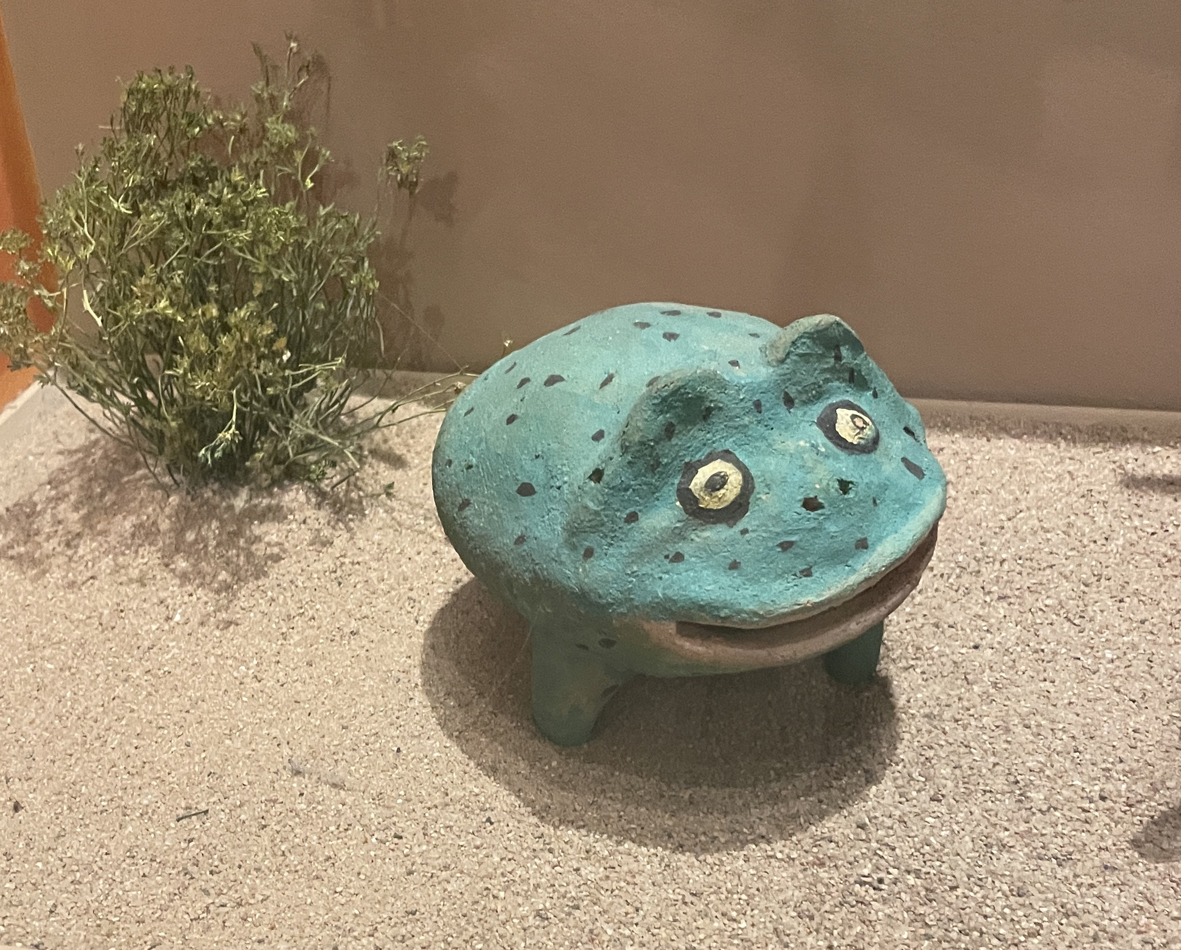
This idea connected many of the pieces, despite coming from various origins. For example, a Native American-made ceramic frog was meant to illustrate a Mojave myth where a frog carries fire from California to Arizona. Many Native American pieces are seen as works of art, when their creator didn’t intend to make art, but instead made them to visualize their experiences and relationship with nature and the world.
Despite being inspiring, the exhibition Multiple Visions: A Common Bond did come with disappointments. There was no way of knowing the exact intentions behind each piece because the majority of the artists who made the works were unknown or not displayed. In this way, there was a disconnect. The collector did not come from the cultures that the works were made in, and, therefore, could not accurately share information about them. This resulted in an uncomfortable and out-of-place feeling.
I saw in one encasement a scene of a Native American pueblo, with miniature houses and Native American figurines, and in the midst of it all, a doll that resembled a white woman with blond hair taking pictures of the houses and Native people. In that moment, I, too, felt like a tourist, gawking at something I couldn’t fully understand.
Cultural objects removed from their location of origin without contextualizing information reminded me greatly of the work of Nicholas Galanin, an artist with work recently on display at SITE Santa Fe. He is a Native American Lingít and Unangax̂ artist, with much of his work tying into the idea of stolen or appropriated art.
The work from his solo exhibition Interference Patterns I found especially moving. One display in the exhibition showed a series of photographs of various materials laid out. The point of the photographs is that if the viewer doesn’t come from the Native American culture in which those materials are used, they won’t know what they are intended for.
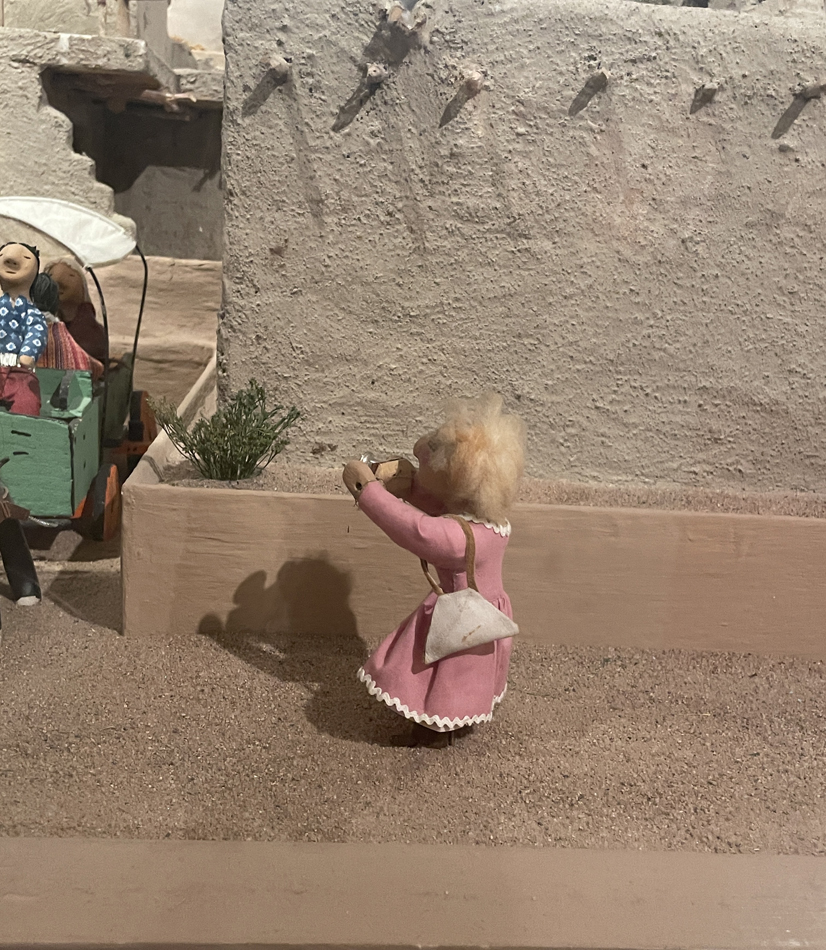
Even though the exhibition Multiple Visions: A Common Bond does provide information on many of the pieces, there were also pieces that I found little to no information on. Because folk art has been an artistic medium not entirely respected in the art world, I think that the exhibition did not fully respect these pieces or their creators.
An article published by the New York Times titled “Curator, Tear Down These Walls” delves into the comparison between folk and academic art, and how folk art is often segregated or detached from work that is considered “academic.” Even though it is different, I believe that folk art should be appreciated just as much as academic art.
Even though it was magical to see so much art condensed in a space, it was also disappointing. Because there were so many pieces, I could not examine and fully appreciate each work, nor was I able to learn about the pieces and why they were placed with other pieces in the exhibition. The pieces were only connected through the simple fact that each work was a piece of folk art, nothing more specific or more meaningful.
Despite all this, I still believe that the exhibition was extremely valuable. Alexander Girard said, “I believe we should preserve this evidence of the past, not as a pattern for sentimental imitation, but as nourishment for the creative spirit of the present.”
Personally, I think that this intention does ring true. It was shocking and awe-inspiring to see so much work from so many different places and people, and for each turn to be something new and surprising. I am glad that each piece is being stored and taken care of, and that the exhibition, despite its shortcomings, can act as a window into the past for years to come.
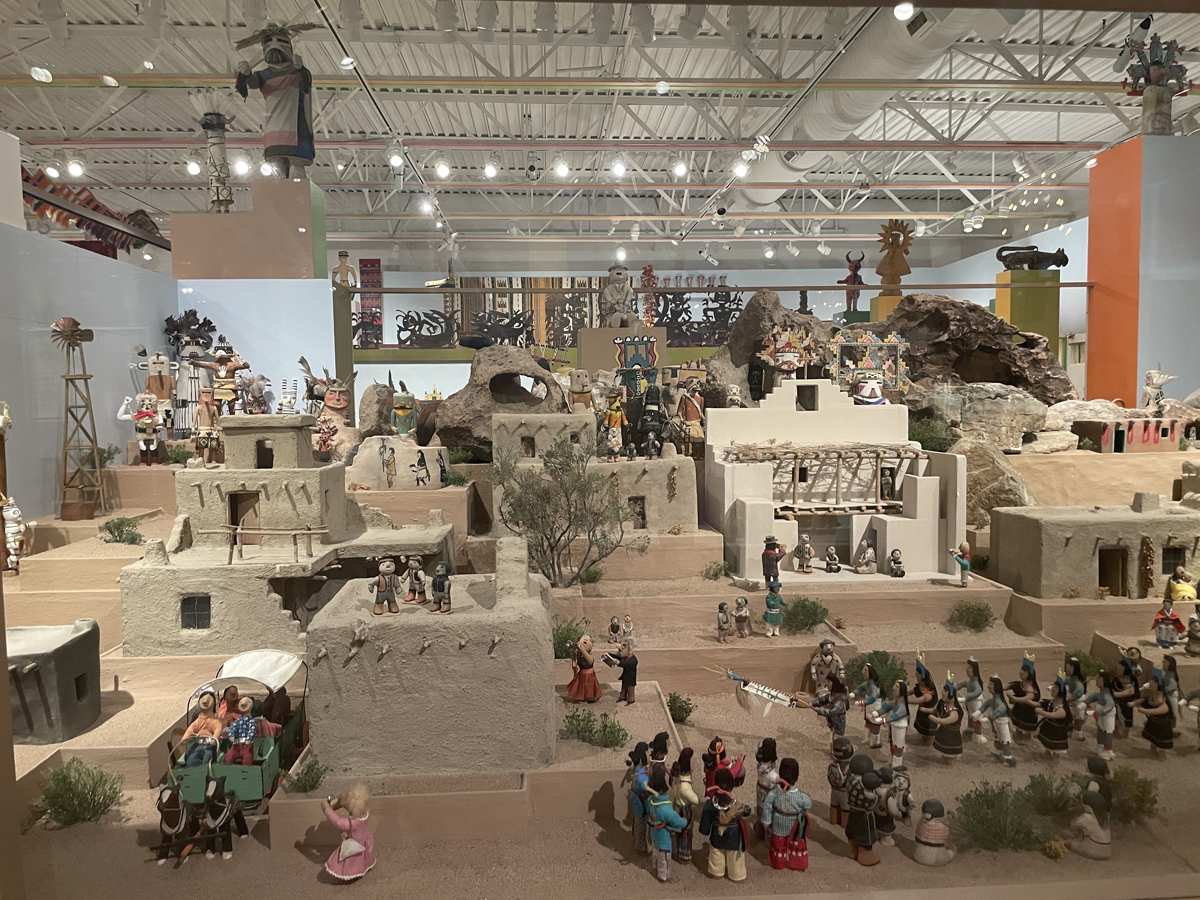
The Young Curators series is presented in partnership with SITE Santa Fe.

